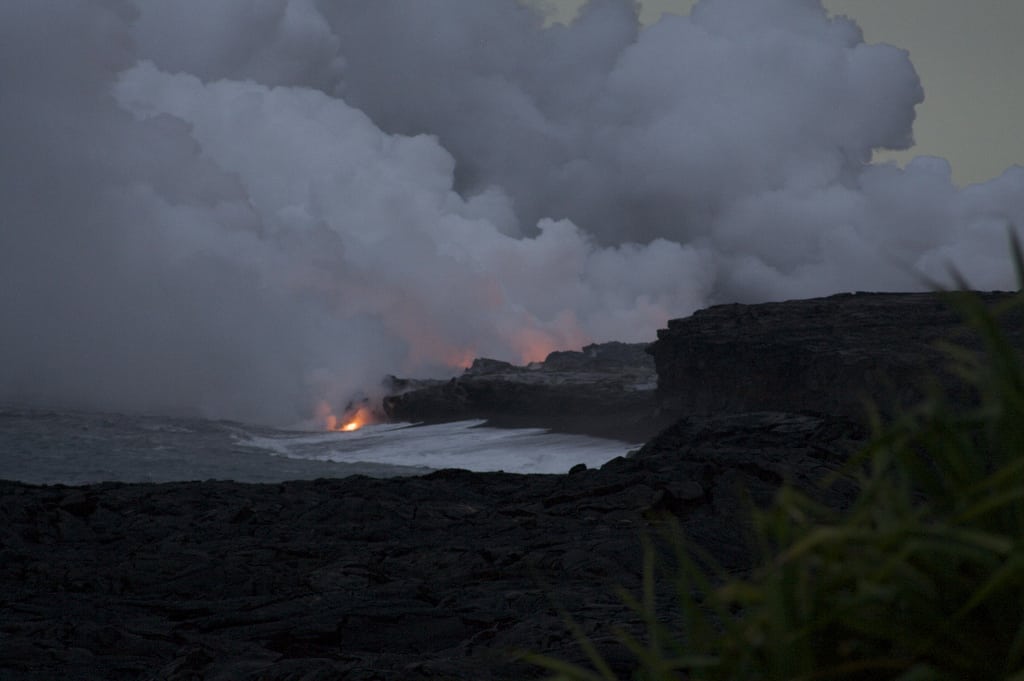Skift Take
Poor geography knowledge is a bane of nearly every destination's existence. Natural disasters are an unfortunate opportunity for tourism officials to educate travelers, even if many will always struggle to read a map.
The Hawaiian Islands span about 1,500 miles and no two of the eight islands are quite alike. But for the past week, headlines of a volcanic eruption, lava flows, and hundreds of earthquakes on Hawaii Island have given plenty of travelers a reason to reconsider their plans to travel anywhere in the state.
Kilauea, an active volcano on Hawaii Island, erupted on May 3 and has caused nearly 2,000 residents to evacuate. A magnitude 6.9 earthquake was also recorded on May 4 and aftershocks from the eruption are ongoing.
But tourism officials tried to assure travelers that areas of destruction were isolated.
Some 35 structures, including 26 homes, had been destroyed as of Monday morning local time, according to Hawaii’s Civil Defense Agency. “Please, the residents of Leilani need your help,” the agency said in a statement. “This is not the time for sightseeing. You can help tremendously by staying out of the area.”
Flights at the island’s two international airports were not impacted, for the most part. Hilo International Airport, about 30 miles from Kilauea, closed for a few hours last Friday as airport officials inspected the runways and taxiways for damage, but it re-opened soon after.
Some travelers have contacted Hawaiian Airlines, for example, to ask if their flights have been impacted (see tweets below).
Aloha Estelle, it is safe to fly everywhere in Hawaii. The volcano hasn't affected any of our flights.
— Hawaiian Airlines (@HawaiianAir) May 6, 2018
Aloha, there is no volcanic activity on O‘ahu and flights are normal.
— Hawaiian Airlines (@HawaiianAir) May 6, 2018
Lava flow has tapered off as of this morning, said Ross Birch, executive director of Island of Hawaii Visitors Bureau, the island’s tourism board. “From a tourism standpoint, this lava flow is causing less of an impact to air quality,” he said. “Last year’s lava flow hit the ocean and that was more of a danger to air quality. This time around it’s a less dangerous situation unless you’re standing in the exact area.
Kilauea has had a continuous lava flow for the past 35 years but this particular eruption and flow stands out because it’s impacted residential areas. Volcanoes are a top motivation for why many travelers visit the Hawaiian Islands. Hawai’i Volcanoes National Park was also closed from Friday to Sunday as park staff accessed the damage.
“We have almost 30,000 visitors per month to the national park and that number spikes immensely when things like this are going on,” said Birch. “The volcano has been kind of that double edge sword for us. When it encroaches on houses and communities it gives quite the opposite effect.”
The nearest hotel to Kilauea is about 30 miles away, said Birch, but he doesn’t feel that message is getting out. “I’m not confident at all that the average traveler is aware of geography,” he said.
Geography Lesson
Many travelers are ignorant of the Hawaiian Island’s geography and size, said Vicky Kometani, a spokesperson for the Mauna Kea Beach Hotel on the Hawaii Island. Hawaii Island is about the size of Connecticut or more than 4,000 square miles.
The luxury resorts along the Kohala Coast are more than 100 miles away from Kilauea and even further from the east rift zone that is active, said Kometani. “There is zero impact to any of us on the west side of the island,” she said. “I don’t think that this is any more or less impactful than the Pahoa incident last year .”
“But given the media coverage — and tendency to sensationalize — we know people will cancel travel plans which is unfortunate,” said Kometani. Visitors who have been to Hawaii Island before and know where Mauna Kea Resort is are not canceling. Visitors unfamiliar with the island are calling and some are canceling.”
But travelers still deserve credit for their concerns, geography knowledge aside. Thousands of transatlantic flights were canceled and about 10 million travelers were impacted when Iceland’s Eyjafjallajökull volcano erupted in 2010, despite the fact that the volcano was thousands of miles from the nearest North American or European destinations.
The Hawaii Tourism Authority has touted record visitor arrivals and spending for full-year 2017 and the first quarter 2018. But Hawaii has also had a rocky start to 2018, between dealing with a false missile alert in January and record rainfall and flooding on Kaua‘i in April that left travelers with uncertainties.
The Daily Newsletter
Our daily coverage of the global travel industry. Written by editors and analysts from across Skift’s brands.
Have a confidential tip for Skift? Get in touch
Tags: go hawaii, hawaii, tourism
Photo credit: Hawai'i Volcanoes National Park, pictured here, closed briefly last week following the Kilauea eruption. Ewen Roberts / Flickr
